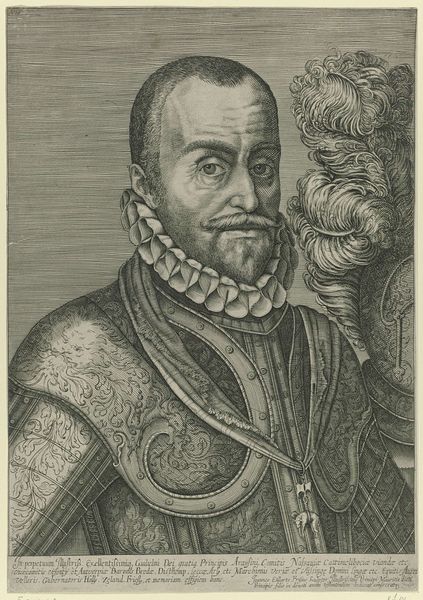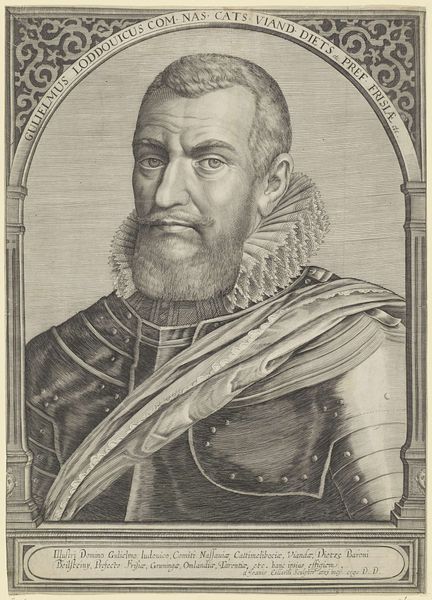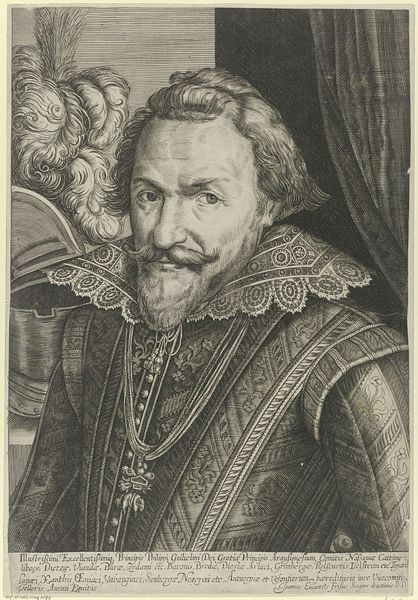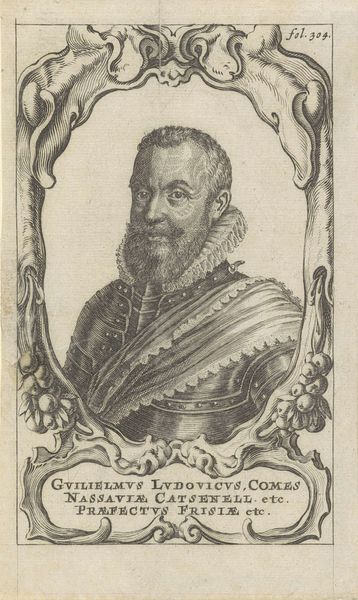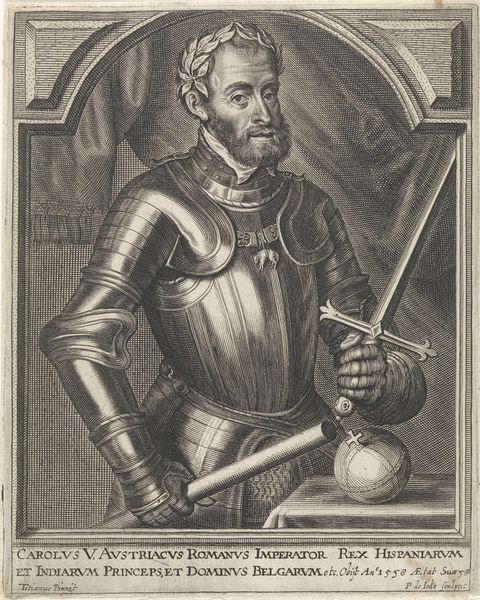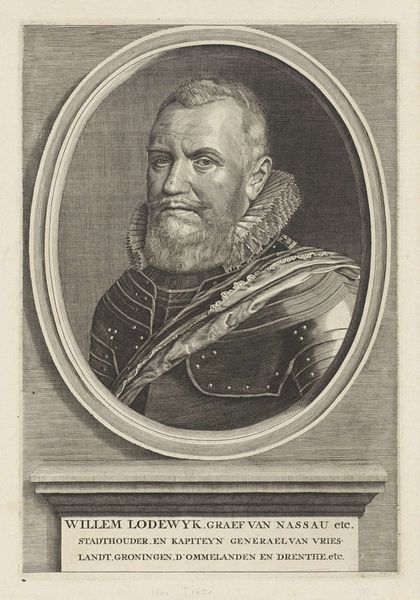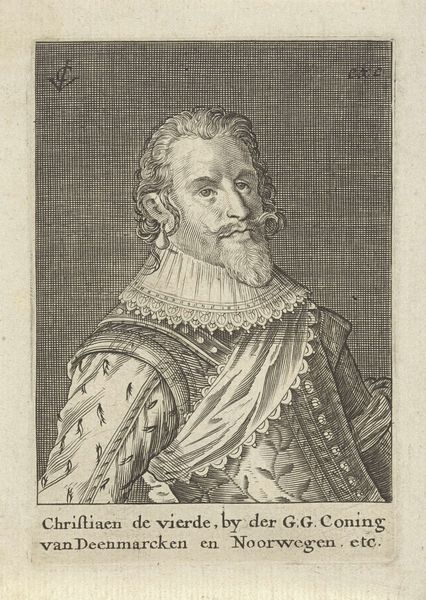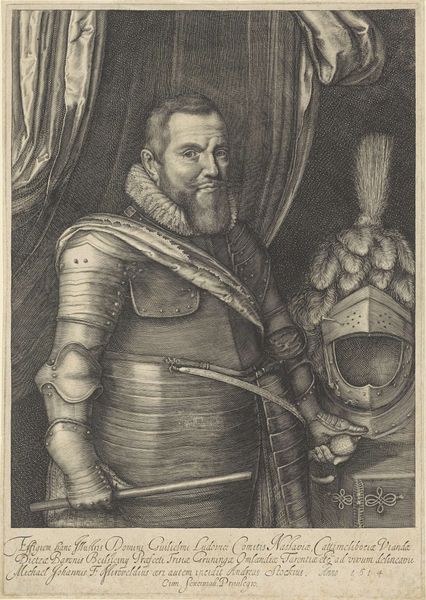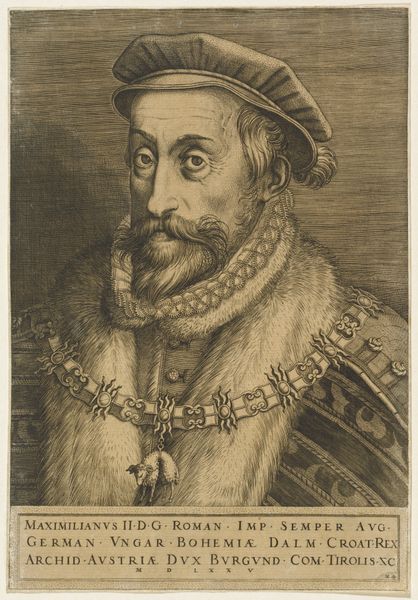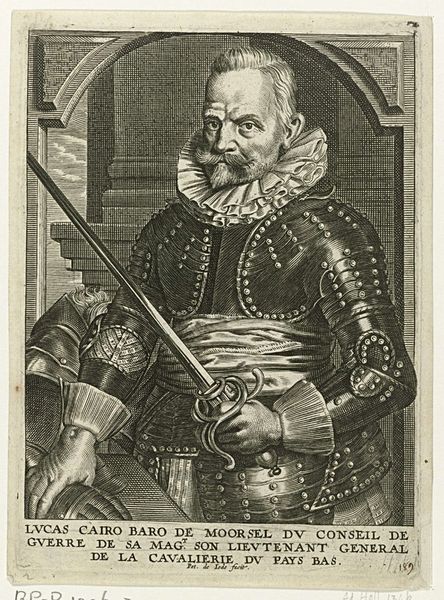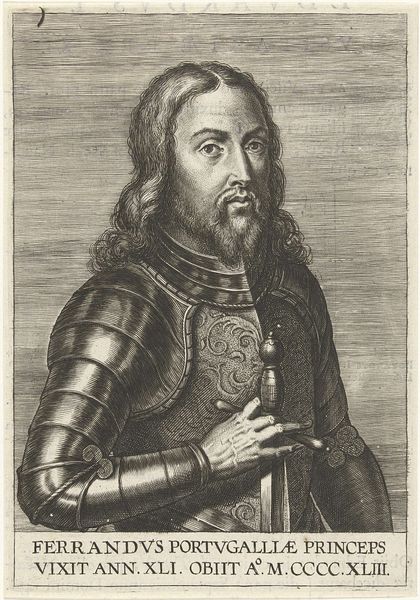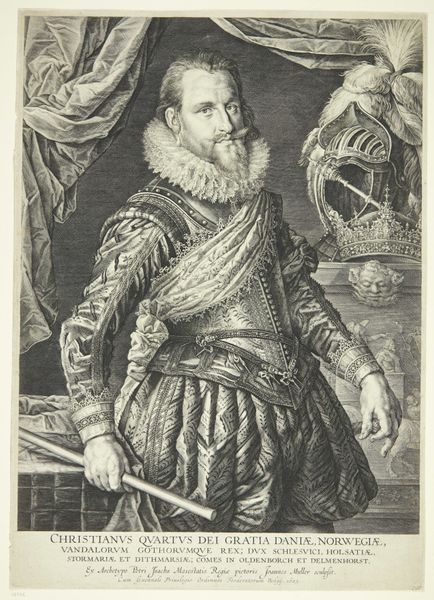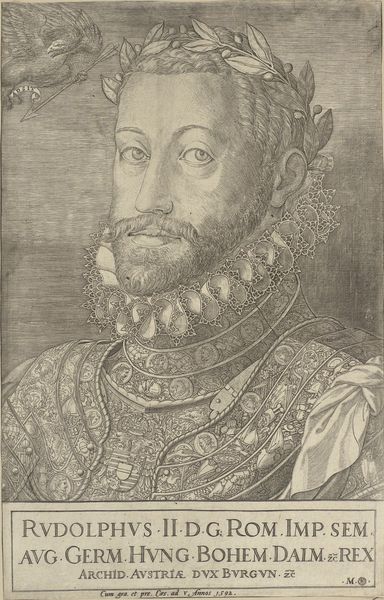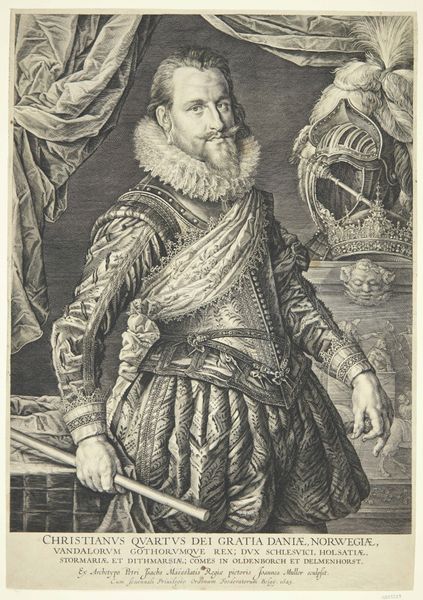
metal, engraving
#
portrait
#
baroque
#
metal
#
portrait reference
#
history-painting
#
engraving
#
portrait art
Dimensions: height 415 mm, width 293 mm
Copyright: Rijks Museum: Open Domain
Curator: The visual weight in this engraving almost feels oppressive; the subject seems confined by the rigid lines and the density of detail. There is a sort of gravitas, almost somber authority, projected outwards. Editor: Here we have "Portret van Willem Lodewijk, graaf van Nassau-Dillenburg," rendered by Johannes Eillarts sometime between 1600 and 1650. It's a portrait, clearly, executed in metal, an engraving of the Baroque period. Curator: Absolutely, the engraving exemplifies a fascination with minute detail typical of the period. Look at the armor—it reflects not only the status of Willem Lodewijk but also his role as a military leader. And that lace collar, with its delicate yet strangely restrictive design… it speaks to constraints imposed upon him even amidst his power. Editor: Indeed, the armor operates as an important symbol of power and protection within the militaristic culture of the era, particularly during the Eighty Years' War. The choice of metal as a medium underscores this; metal has an inherently symbolic function denoting strength, resilience, and durability. Think of the Dutch struggle for independence and religious freedom – Willem Lodewijk was stadtholder of Friesland, Groningen, and Drenthe. He played a key military role. Curator: Note also the strategic placement of the helmet, a seemingly incidental detail. Its elaborate plumage can be interpreted not simply as adornment but as an indication of wealth and position—the ostentatious, confident display of worldly rank. It reinforces this image as one meticulously constructed for posterity. Editor: It's important, though, to critically consider that construction. These kinds of portraits served a specific ideological purpose; this is not an impartial, neutral rendering of an individual. How can we untangle the mythologizing impulses inherent in such state-sponsored portrayals? What image of power does this promote, and what political messages were conveyed to both domestic and foreign audiences through this depiction? What choices are made about his representation regarding his gender and social position? Curator: Fascinating questions to explore—questions that inevitably lead us to a deeper comprehension of the intricate dance between image and meaning, symbol and society. It demonstrates how historical memory is, often deliberately, cultivated. Editor: Exactly. Context helps to reveal a narrative of its own. Now that you see it, consider how such images function not just as art but as potent instruments of political and personal expression across time.
Comments
No comments
Be the first to comment and join the conversation on the ultimate creative platform.
